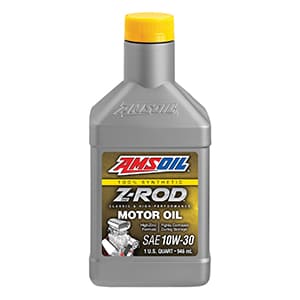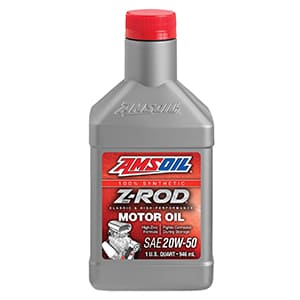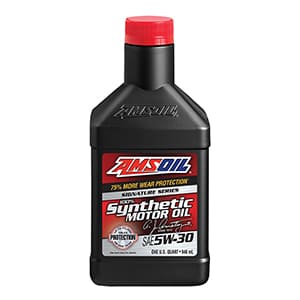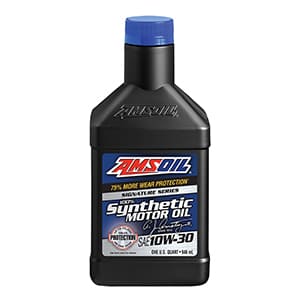How many generations of Corvettes* are there? In their history, there have been eight generations of Corvettes*. This blog post will look at the renowned Vette’s first six generations.
For nearly seven decades, the Chevrolet* Corvette* has held the title of “America’s Sports Car.” It was always intended to be a high-powered sports car.
Its function has changed somewhat over the years, but the core idea continues to be the same.
This vehicle was a smash hit for General Motors* when it went on sale to the public only six months after its introduction at the January 1953 Motorama.
The legendary General Motors* designer Harley Earl was responsible for the creation of the Corvette*, which was unquestionably a work of art.
People liked how small and endearing it was. The car’s twin pod rear fenders, rocket ship-like tail lights, and ferocious, sharp-toothed grille made quite an impression. The Chevrolet* Corvette* was a thing of beautiful elegance when it was first released, and it was only available in Polo White with red leather.

A straight-six engine with 235 cubic inches of displacement and 150 horsepower had been modified and installed in the engine compartment. This Vette was equipped with a two-speed Powerglide automatic transmission as standard equipment. More than that, it was a landmark change in how products were made.
The fiberglass-bodied Corvettes* were built by hand on a Chevrolet* passenger car chassis measuring 102 inches. Vette models came standard with front coil-sprung wishbone suspensions and rear 4-leaf semielliptic springs.
There’s no disputing that the Chevrolet* Corvette* has one of the most iconic automotive histories in the United States, but things weren’t always so rosy for the iconic sports car. The hand-built Corvette*’s price tag reflected the car’s similarly labor-intensive build process. In truth, it was more costly than a Cadillac* or Jaguar* bought from abroad.
Chevrolet* added red, black, and blue to their palette in 1954. The interior of the Corvette* was available in beige, but the vehicle’s technological and aesthetic qualities remained the same. Nonetheless, sales exceeded three thousand. The Corvette* was on the edge of demise in 1955.
General Motors* was eager to abandon the car since purchases had dropped to below 700 units. Zora Arkus-Duntov, a Belgian-American engineer, saved the Corvette* from oblivion.

His experience as a racing car driver led him to the conclusion that the car in question required more power and improved handling in order for it to compete. As a result, a V8 engine with a displacement of 265 cubic inches and 195 horsepower as well as a three-speed manual gearbox was installed. Duntov cemented the Corvette* as a future legend when he drove it at a speed of 150 miles per hour during the timed mile held in Daytona.
The Vette matured throughout the subsequent two years. The remodeling that took place in 1956 is when the scalloped sides were first introduced. In 1957, the 283-cubic-inch V8 Ramjet Fuel Injection engine made its debut, with a maximum output of 283 horsepower.
After a dramatic increase in power, the Corvette* was able to complete the quarter-mile in less than 14 seconds. The Corvette* had become a major player in the field of high-performance driving. The speed and sophistication both increased dramatically between 1958 and 1962.
At the end of the production cycle for the first iteration of the Chevrolet* Corvette*, a V8 engine with 327 cubic inches of displacement was made standard equipment. The powerplant was upgraded to a Ramjet Fuel Injection model, which resulted in an increase of 360 horsepower for the car.
The 1963 debut of the Sting Ray body had convertible and split-window coupe variants. For many people, this was the ideal Corvette*, and when it was modified to Z06 racing spec, it was a very fearsome adversary. The second wave Corvette*’s improved handling was the result of four years of work by engineers. Several 327 V8s and the potent 427 were added to the range. In addition, disc brakes were installed on each of the four wheels.
The official claim for its horsepower was 430, but the widespread belief was that it could generate 600. The General Motors* Mako Shark II concept car served as the inspiration for the development of the C3 Corvette*, which made its début in 1968.

The Stingray* coupe was distinguished from its competitors by the addition of a retractable hardtop. A three-speed automatic gearbox became standard equipment, replacing the two-speed automatic transmission that was previously standard. The flagship LS5 was powered with a 390 horsepower V8 (either a 350 or 454 displacement.)
After a year, the LS6 engine was released, and it brought the total horsepower back up to 430. During the 1970s, the Corvette* underwent a lengthy process of remodeling, with the 1974 adoption of Federal bumpers becoming the most prominent alteration.

A further concession to the ongoing oil crisis was made when the big-block V8 engine was taken out of production, leaving just the 350 engine available for the length of this model’s manufacturing life. Additionally, the Stingray brand was taken off the market.
In 1983, owing to quality control and supply chain difficulties, no Corvettes* were sold. It was the fourth generation of Corvettes* that had the greatest widespread success. 1984 marked the beginning of its manufacturing, which lasted over the subsequent 12 years. Both the manual and automatic gearboxes were available, and the 350 V8 engine was kept as the standard option. Its most distinctive features are the innovative six-speed manual gearbox and the potent ZR-1 engine.

Though it had been on the market for just three years, the ZR-1 was still able to produce 405 horsepower. A new small-block LS1 engine delivering 345 horsepower and a more streamlined and functional design than its forerunner marked the introduction of the C5 Corvette* in 1997.
The hardtop and convertible versions came out in 1998 and 1999, respectively.
With a 385-horsepower powerplant and improved suspension, brakes, wheels, and tires, Chevrolet* resurrected the Z06 in 2001. The ZR-1’s capability was matched after a year thanks to an increase of 20 horsepower.
To celebrate the Corvette*’s 50th year in production and sale, a select number of the vehicles were produced in 2003. 2004 marked the beginning of production for the sixth generation of the Corvette*. At the time, it was widely considered as the highest-rated and best-driving car in the group.

The motor of this Vette was 6 liters and 366 cubic inches, and it was capable of delivering 400 horsepower. A Head-Up Display, an anti-lock braking system, and active handling were some of the elements of the automobile that it featured. For the 2005 model year, the Z06 was available once again with 500 horsepower.
Seventh- and eighth-generation Corvettes* will be examined in more detail in a future post. Thank you for taking the time to read our post titled “How Many Generations of Corvettes* Are There?” Hopefully, you found this post both informative and enjoyable.
This iconic sports car has been rightfully recognized as one of the best American muscle cars ever produced, ensuring its place in automotive history.
If you drive a vintage or classic Corvette* and want to give your engine the finest lubrication possible, you should look into purchasing a synthetic engine oil designed specifically for vintage and classic cars.

A correctly prepared synthetic motor oil for historic cars will have high quantities of ZDDP, top-tier additives, and rust inhibitors to maintain your passion, offer optimal performance, and prevent rust and corrosion in storage.
If you drive a modern Corvette* and are looking for the best possible protection and performance, you might consider switching to a synthetic motor oil that has been specially formulated for car enthusiasts.
A maker of specialist synthetic engine oil likely uses cutting-edge technology and has a longstanding commitment to producing the world’s finest motor oil.
The outcome is superior engine protection for the vehicle’s owner, surpassing even the highest industry requirements.
*All trademarked names and images are the property of their respective owners and may be registered marks in some countries. No affiliation or endorsement claim, express or implied, is made by their use.
